Delahaye 135 Competition Drophead Coupé by Abbey Coachworks Ltd. 1937
General description :
1937 Delahaye 135M Competition Drophead Coupé by Abbey Coachworks Ltd.
Type 135M with chassis number 47456.
This car is in perfect order having been the recipient of a major nut & bolt restoration & carries rakish drop head coachwork by Abbey Coachworks Ltd.
First built in 1934, the Type 135 is one of the most renowned and sought after automobiles made by Delahaye. It knew many types of body styles, the glamorous sporting tourer was a sought after luxury vehicle that remains very popular with classic car collectors today.
This unique 1937 Delahaye 135 Drophead Coupé by Abbey Coachworks Ltd. is a beautiful example of the quality of work by Delahaye and Abbey. It has a six-cylinder engine, Cotal electromagnetic gearbox as an expensive option (£43), and a unique haute couture bodywork and luxury finish, which makes this a very rare Delahaye.
This car was the subject of a test drive for an article which appeared in the 1937 December issue of Motorsport magazine . The article was named “A fine French Sports car: a test in difficult conditions of the 3-Litre Delahaye”. This car spent most of its life in England and Ireland. The restoration started in 2015 and was completed in September 2019. It was decided to bring the colour scheme to blue and golden colours. The older pictures nor the Motorsport Magazine article revealed the actual colour. The colour pictures that surfaced showing the car in two tones and that was a reliable reference to continue the restoration.
The history in detail - chronologically
1937
Date of original registration is 12/3/1937.
A letter from the official “Club Delahaye” signed by president Jean-Paul Tissot confirms the car left the factory in 1937 for England, where it received its body at Abbey coachworks ltd.
In December 1937, the car was featured in Motor Sport magazine. It costs £1.030 with Cotal magnetic gearbox as an optional extra of £43. The car was imported in England by Count Doric Heyden, a motorsport agent and a Delahaye concessionaire with showrooms in Park Lane, London. Phone book records suggest that Delahaye's London concession was set up in 1937 at 22 Queensberry Mews West, SW7 and closed in 1940, reopening elsewhere in 1949. Count Doric Heyden is one of those people who appear briefly in motor racing history and then apparently disappear without trace. He was a White Russian emigré and was the UK agent for Delahaye in the late 1930s. There's a connection with racing driver Rob Walker, as he acted as an entrant for Walker and others at the time: Anthony Blight's "French Sports Car Revolution" book includes a picture of him taken in 1938, showing a rather dapper and slightly balding man, probably in his 40s.
Rob Walker* arguably Formula 1’s greatest privateer, recalls that during Le Mans 1939 Count Doric Heyden was running the pit, a man who enjoyed a glass of wine. He had filled the pit with champagne, but by early afternoon he and the crew had nearly drunk it all. Then they realised this poor bastard was still rushing round out there and there wouldn't be any left for him, so they called me in for a glass while refuelling. * Rob Walker, a descendant from whisky tycoon Johnnie Walker, was a Scot born south of the border who raced as an amateur before the Second World War. He finished eighth in the 1939 Le Mans 24 Hours sharing a Delahaye with Ian Connell, but his own racing ambitions were confined to hill climbs and trials once peace was restored to Europe.
Back to the car, because before 1942 previous owners were:
J. Stott
Francis Cowlrick (1876-1943) . He then sold it to Gordon Sutherland who was the owner of Aston Martin Ltd. (Mr Sutherland sold Aston Martin in 1946 to Sir David Brown)
1942 5 years after its production date and with 2,200 miles on the clock the Delahaye was put up for sale by Gordon Sutherland of Aston Martin Ltd.
On December 18th, 1942 the car was sold to Mr Eric Barnard. Evidence of that is found in his diary from 1942: “Purchased Delahaye DXE 66 Count Hayden, from London Sutherland, Aston Martin; Paid by Cheque £200. Mileage 22,00” And also in proof of payment from Aston Martin Limited, stating that 200 Pound was received by cheque for a Delahaye Drophead Coupé.
Eric was working for a subcontractor to the British military. He was a man who knew his cars, before the Delahaye he owned a 1930’s Alvis 20 and an Aston Martin (licence plate AGH 433) + a 1934 Riley 12-6 Kestrel Saloon. He researched in magazines like The Motor & The Autocar whatever he could find on Delahaye, it’s racing pedigree and the Cotal magnetic gearbox.
Even though the Delahaye was in good condition before it went into storage in August 1941, it required some work. Eric, together with one of his brothers Clifford “Biff” who was an engineer for Rolls Royce, started work on the car. They did the work at Eric's workplace which was Napier's in Luton ( The Napier Luton Flight Development Establishment - FDE) . The original grill has rusted, so either they used one from a Riley Sprite or made one from aluminium (different stories).
The car is visible in several period pictures and in different guises. Cars were allowed to drive in England during WW2 but only if the lights were blacked out or entirely removed. In January, February and March of 1943, Eric wrote letters to Motor Sport Magazine and manufacturers like Bendix and Peugeot in London in an attempt to receive as much information as possible regarding the car, it’s gearbox, etc. A lot of correspondence dating back to that period is available. He was contemplating converting it to a competition car after the war.
This ad is from the 1943 March edition of Motorsport magazine . "E. T. Barnard, 194, Luton Road, Dunstable, Bedfordshire, who, as mentioned last month, has acquired a 1937 "Competition" 3.5-litre Delahaye (DXE 66), is very anxious to obtain data, spares and a handbook about it, and to correspond with past owners. This is the car once owned by Count Heyden, with Cotal gearbox and an Abbey drophead coupe body; it has been carefully stored since August 1941 and is reported to be in very fine condition. Barnard is contemplating a light body for post-war sports car racing. “
Arthur and Eric were both test pilots at Napier’s. He joined the Royal Navy as a volunteer/pilot in September 1943. He passed away on April 13th, 1945 near Sidney, Australia in a crashed test flight with a Fairy Mk1 Firefly. The plane nor the body were ever recovered.
1945 - 1946
September 1945: Yvonne Joan Jamar was Eric’s wife from Belgium. Five months after Eric’s passingshe tried to sell the Delahaye. Through correspondence dated to September 1945, we find that she wrote letters to an R.A.F. officer who was interested in the car. The asking price is unknown. However, she received advice and information on where and how to advertise the car.
May 1946 A year after her husband died she sold the Delahaye for around £900 to George Abecassis. This allowed Yvonne Jamar to purchase two houses, and one of these houses is still with the family today ( October 2019). George Abecassis was a racing driver and car dealer H.W. Motors Ltd. located at Bridge Motor Works, Walton-on-Thames, Surrey.
His son, David Abecassis writes: “Thank you for your enquiry on the georgeabecassis.com website. I am sorry that I cannot help you with any details about the car. If George bought it, it will have been in order to trade it in his business, H W Motors Ltd. Although the business still exists today on the same site, they have no records from 1947, so there is no point in enquiring of them. I can only tell you that George did not race the car - I have his complete racing record from 1947 and there is no evidence that he entered a race with the car. Business was quite good in 1947 and my guess is that it did not remain in the H W Motors showroom very long. I say this because Fred Hobbs writes in his 1990 book "A Life with HWM" on page 36 "Interesting second-hand cars were being sought all the time. Several Delahayes were purchased..."
Yours sincerely,
David Abecassis “
The car did not stay for very long at H W Motors ltd. as two months later it was sold and exported to Ireland.
July 1946: William Fisher Tipping living at Maskett’s Farm, Nutley, Sussex buys the car. He imported the Delahaye from England to Ireland in 1947 shortly after the time the Tipping family moved from Sussex in England to Co Wicklow in Ireland. The car was registered at Dunran Castle, Ashford, Ireland on December 9th 1947 and kept its number plate of DXE-66. The son of William Fisher Tipping, Roger Tipping recalls: “I was born in 1958 and have always had memories of the car. I remember my father proudly telling his 2 young sons that we are now doing 100mph on the main road to Wicklow town!! Probably not wise! I can’t give you exact details of when the car was bought but do remember it being sold. It was taken on a truck flatbed as it had not run for many years I think due to a problem with its preselector gearbox. That was to Mr Pat Wynne I think and would have been in the early 70s or late 60s. I wish he had kept it! We used to as kids play in the car in a garage on our farm.
The car had been off the road since 1952 as the big ends in the engine were “run”. The intention to fix this never came true and the car was dismantled and it stayed like that until 1973. I have attached the only 2 pics I have of the Delahaye both with my dad at the wheel. He really loved that car and courted my mother in it amongst other things I am sure. I have many memories of this car, sadly most while it was not running! I remember there was a problem with the Cotal box and I seem to remember the head being off for some reason!”
Early 1970s Mr Pat Wynne buys the Delahaye from Mr. Tipping and later sells it to David Dunn, Co Dublin. Under the ownership of Mr Pat Wynne, the engine was rebuilt, the body repainted, a new hood was fitted.
End of the 1970s David Dunn sold the car to Olaf Costelloe - around 1978/'80. He painted the car dark blue and gold. The car stayed with Mr Olaf Costelloe for nearly 40 years The car was featured in a book “The Automobile Treasury of Ireland” with a photo of the Delahaye - taken in Ireland in the late 1970s. The book "The Automobile Treasury of Ireland ", by Finbarr Corry was published by Dalton Watson in 1979. All photos are in monochrome. There's no credit given for the Delahaye photo but most likely it was taken by either Finbarr or his colleague George Stuart (both deceased).
2006 Jean-Paul Tissot, president of the Club Delahaye publishes a book "Delahaye - La belle carrosserie française" (ISBN-978-2-7268-8697-7) On page 240 of the book the car is pictured, with number plate DXE-66.
2015 The car was sold by Olaf Costelloe and within a few weeks left Ireland. The same year it was reported seen at a show or sales event in Essen, Germany. Owner Philippe Rosy sold the car through a workshop in France to a Belgian collector.
2019 The workshop L’Atelier des Coteaux in Blérancourt, France started the restoration in November of 2015 and finished the car in September of 2019. That same year the car participated in the Zoute Concours at the Belgian Coast side and won 1st runner up in the pre-war open class.
2020 To be defined
Abbey Coachworks Limited Abbey Coachworks Limited was a British coachbuilding business founded in Merton , South West London and later Acton , North West London and was active between 1930 and 1938. Arthur P Compton set up several coachbuilding businesses, including Compton, Sons and Terry which was founded in 1929 in Merton, South West London. He left this in 1930 to set up on his own, and the other partner D.H. Terry with D.H.B. Power renamed the company Abbey Coachworks. In 1933, the company moved to larger premises in Acton, North West London. ( Abbey Coachworks, Ltd., of Minerva Road, Chase Estate, North Acton, London, N.W.10. ) The company became well known for its attractive open tourer and drophead designs on mainstream chassis. Some of these were adopted by the manufacturers as catalogued models; others were commissioned and marketed by large dealers. All their models, whether open or closed, have an individual stamp about them, and are notably smart and well finished. In 1936, they took over the Wingham brand from Martin Walter and changed their name to Wingham Martin Walter . They exhibited at the 1937 London Motor Show under the new name, but by the late 1930s custom coachbuilding on a car maker's chassis was in terminal decline and they seem to have gone out of business shortly afterwards.
Abbey concentrated on short production runs and some bespoke bodywork. Cars they equipped included the Wolseley Hornet Special , Rover 20 and various MGs particularly their MG Magna , Fords , Hillmans , Vauxhalls and Mercedes-Benz. Some of their production was for other coachbuilders such as Jarvis of Wimbledon and was sold under names other than Abbey. Martin Walter themselves remained in business after the demise of Abbey, and after the Second World War made a range of motor caravans under the Dormobile name, and ambulance and minibus bodies on Bedford Austin and Ford chassis.
The history of Delahaye Although one of the most prestigious carmakers of its time, Delahaye is today one of the lesser known French marques. While this is not a surprise, it is certainly a shame. Delahaye lasted a mere 60 years compared to its contemporaries like Peugeot, Bugatti and Citroen, which continue manufacturing vehicles today, and over the six decades since closing its doors, Delahaye has simply faded into obscurity. That is with the exception of those in the classic car world. For collectors, Delahaye automobiles remain one of the most sought after vehicles, with buyers paying huge sums for the privilege of owning one. This is due in part to the rarity of many surviving models: Delahaye collaborated with a variety of legendary coachbuilders, which resulted in the unique styling of many individual cars. Delahaye automobiles routinely sell for hundreds of thousands of dollars, while the extremely rare ones sell in the millions. One example of this is the 1937 Delahaye 135 Competition Court Torpedo Roadster by Figoni et Falasch that sold for a whopping $6.6 million in the RM Auction at the 2014 Amelia Island Concours d’Elegance. The car was one of only two surviving short chassis variants known to survive from the original 30 built by Delahaye.
Although short-lived, the Delahaye marque has a fascinating history. This article provides a brief overview of that history and the man who started it all. Emile Delahaye & The Early Years Delahaye was founded in the 1890’s by Emile Delahaye in his hometown of Tours, France. Born in 1843, Emile went on to study engineering in Angers, becoming an engineer in applied arts and crafts in 1869. He would return to Tours and marry in 1873, before taking over a factory that specialized in equipment and kilns for making ceramics six years later. Emile quickly made changes, moving into the production of pumps and engines. With a keen interest in gas engines, he designed an internal combustion engine for the shipping industry in 1888. He began experimenting with belt-driven cars, and his first automobile debuted at the Paris Motor Show in 1894. To promote his fledgling automobile company, Delahaye entered famous motor races like the 1896 Paris-Marseilles in which he was also the driver. Proving his vehicles had the mettle to finish incredibly grueling rallies, Delahaye’s cars were indeed quickly noticed. Struggling to keep up with demand, it became clear that a larger facility was needed, which was realized in a deal with Emile’s customer and fellow racer, Georges Morane who had inherited an engineering factory in Paris. Morane and his brother-in-law Leon Desmarais partnered with Emile in the new automotive company Société des Automobiles Delahaye , and production was moved to Paris where the company rapidly grew to become one of France’s premier automobile manufacturers.
However, Emile was not to see the landmark brand that his company was to become. With failing health, he was forced to resign in 1901, selling his shares to his partners. He died just four years later. The Delahaye Cars Company. For almost three decades, the Delahaye Cars Company produced solid, dependable vehicles renowned for their stamina. They also produced trucks, powerboats, industrial engines and firefighting equipment. From 1927 to 1931 the company collaborated with Chenard & Walcker to manufacture medium-class cars, and two years later, Delahaye acquired Chaigneau-Brasier. 1933 marked the beginning of a new era for Delahaye, as the company began directing its efforts towards producing prestige cars and again becoming a star of the racing circuit. While Delahaye continued manufacturing commercial vehicles and other industrial equipment, the luxury vehicle became the company’s hallmark. This transition was aided by their acquisition of the prominent marque and racecar company Delage, and more importantly, with the hiring of a young engineer called Jean Francois.
Francois was commissioned to build a sports car series, which resulted in the release of the type 135, the car that would become the car manufacturer’s legacy. Developed in 1934, the type 135 went on to take victories at numerous racing events including the Monte-Carlo Rally, the Le Man and the Paris-Saint Raphaël motor races. The type 135 experienced similar triumphs in car shows like the prestigious Concours d’Elegance, becoming the new darling of the rich and famous.
As Delahaye did not have in-house coachworks, the bodies were built by a variety of independent coachbuilders, making each car unique. Delahaye attracted many elite French coachbuilders including the likes of Henri Chapron, Saoutchik, Franay, Letourneur et Marchand, Antem, and others. Although the company went on to produce a number of vehicles, it was the famous type 135 that was the star of the Delahaye stable. Other types released by Delahaye included the Type 145, which was designed as a two-seater racing car and the type 165, which was the road version of the aforementioned. However, with the beginning of WWII shortly after the launch of the 165, production was limited.
The poor economic conditions created by WWII made an exceptionally trying time for carmakers, especially those manufacturing luxury vehicles. Delahaye survived predominately on the sales of its commercial and military vehicles, and reintroduced the 135 after the war. The marque went on to produce the type 235 in 1951, which would be the end of the line for Delahaye. The company was taken over by Hotchkiss in 1954 and Delahaye cars were put out of production, however, not before the 235 claimed its place in the history books with a record crossing of Africa in the renowned Algiers-Cape Town rally, with a top speed of 182 kilometers per hour.
1937 Delahaye 135 Competition Drophead Coupé by Abbey Coachworks Ltd. is listed for sale on ClassicDigest in Essex by Prestige House for Not priced.
Car Facts
Car type : Car Make : Delahaye Model : 135 Model Version : Competition Drophead Coupé by Abbey Coachworks Ltd. Engine size : 0.0 Model Year : 1937 Sub type : Coupé Location : Essex Vehicle Registration : Undefined
Not priced
Seller Information
Vintage & Prestige
Prestige House
+44(0)1375 379719, +44(0)7967 260673
Prestige House
+44(0)1375 379719, +44(0)7967 260673
People who viewed this Delahaye 135 also viewed similar Delahaye listed at ClassicDigest
Other cars listed for sale by this dealer
About Delahaye
Once upon a time, in a land known for its wine, cheese, and snobbish waiters, the French decided to build cars. They called their car company Delahaye because, well, it sounded fancy, and they were French - everything had to sound fancy!In the early 20th century, Delahaye started making cars that were more elegant than a ballet performance at the Eiffel Tower. Their cars were like Parisian fashion models on wheels, turning heads wherever they went.
But the French, being the French, decided to make things a bit confusing. They named their cars with a bunch of numbers like 135 and 165. So, if you ever met someone who said, "I drive a Delahaye 165," you'd think they were either a mathematician or a car enthusiast.
Now, let's talk about Delahaye's American adventure. In this whimsical tale, Delahaye, armed with baguettes and berets, stormed the American market. They didn't actually do this, but let's pretend they did!
Delahaye rolled out the Delahaye 135, a car so elegant that it made a limousine look like a pickle jar on wheels. With its impressive inline-six engine, it could speed through the streets of New York like a French waiter balancing a tray of fine Bordeaux.
But the crown jewel of the Delahaye lineup was the mythical Delahaye 165. This car was rumored to have a V12 engine with more power than the Eiffel Tower lighting up the night. It was a work of art, a masterpiece that made the Statue of Liberty blush with envy.
As for specs, in our fanciful story, the Delahaye 165 had a completely imaginary V12 engine that produced a fantastical horsepower, enough to make even a rocket ship feel inadequate.
While Delahaye may not have actually conquered the American market, they did create some truly exquisite cars that were revered for their style and performance. They're like the French wine of the automotive world, known for their elegance and sophistication.
Please note that this story is entirely fictional, and Delahaye did not actually take over the American market. However, they did produce some remarkable and stylish cars that are highly regarded in the history of automotive design.
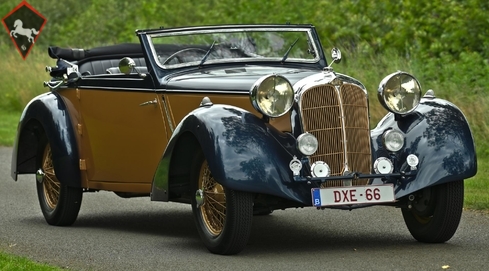















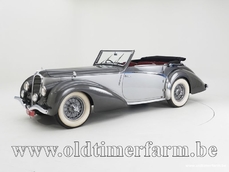
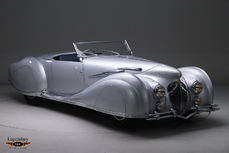
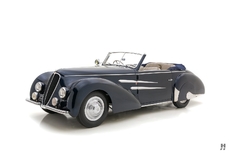
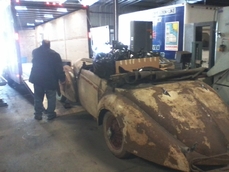
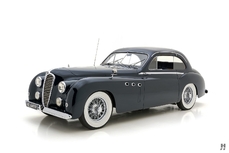
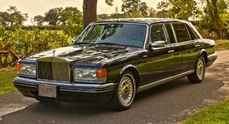
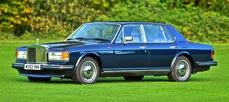
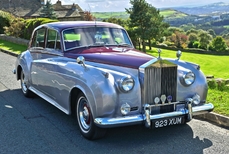
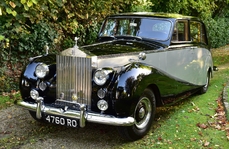
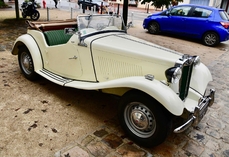

 vars & config
vars & config
 logs & msgs
logs & msgs 39
39 10429.8 KB
10429.8 KB 1227 ms
1227 ms



